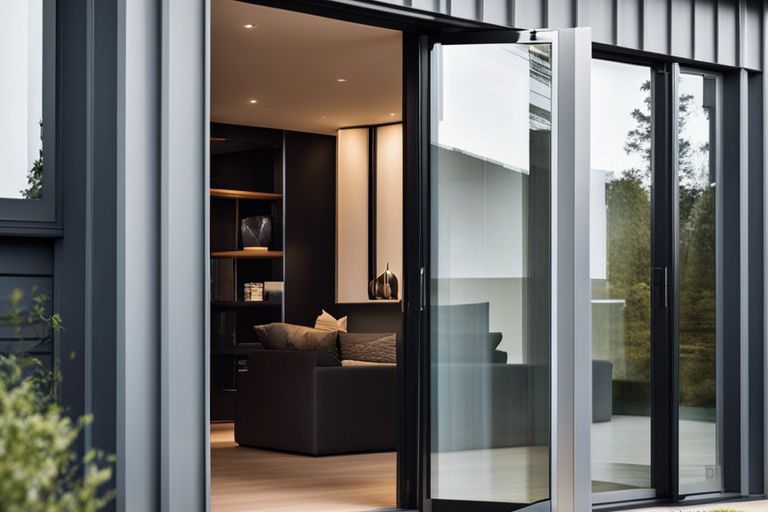Understanding building regulations and ensuring compliance for flat rooflights is crucial for anyone planning to install these structures in their property. Failure to adhere to the necessary regulations can result in serious consequences such as safety hazards and legal issues. It is important to be aware of the minimum requirements for ventilation, thermal performance, and safety when installing flat rooflights. By ensuring compliance, property owners can improve energy efficiency, enhance natural light, and add value to their property while ensuring the safety and well-being of occupants.
Key Takeaways:
- Building Regulations: Flat rooflights must comply with building regulations to ensure safety, thermal efficiency, and structural integrity.
- Approved Document Q: Ensure compliance with Part Q of the Building Regulations for security in new dwellings.
- Competent Installers: It is essential to use experienced and competent installers to guarantee proper installation and compliance with regulations.
Understanding Building Regulations
Building regulations are a set of standards put in place to ensure the health, safety, welfare, and efficiency of buildings. Compliance with these regulations is mandatory to guarantee that construction projects meet minimum standards for structural stability, fire safety, ventilation, and more.
General Building Regulation Framework
The general building regulation framework in the UK is governed by the Building Regulations 2010, which provides detailed guidance on various aspects of construction. These regulations cover areas such as structural integrity, fire safety, energy efficiency, and accessibility, among others. Compliance with building regulations is overseen by local authorities or approved inspectors to verify that buildings are safe and habitable.
It is crucial to adhere to the general building regulations to ensure that buildings are constructed and maintained to a high standard. Non-compliance can result in dangerous living or working conditions, legal implications, and difficulties in selling or renting properties.
Specific Regulations for Flat Rooflights
When it comes to flat rooflights, specific regulations must be followed to guarantee their performance and safety. These regulations focus on aspects like thermal efficiency, weather tightness, and impact resistance. Ensuring compliance with these regulations is essential to prevent issues such as heat loss, water ingress, and accidents.
Installing flat rooflights that meet the specific regulations not only enhances the comfort and safety of occupants but also contributes to the overall energy efficiency and aesthetic appeal of the building. Additionally, compliance with these regulations demonstrates a commitment to quality and professionalism in the construction industry.

Design and Installation Considerations
Structural Integrity and Safety Standards
When it comes to designing and installing flat rooflights, one of the most critical considerations is ensuring structural integrity and compliance with safety standards. The rooflight must be able to withstand various loads, including snow, wind, and maintenance activities. It is crucial to follow the building regulations and industry standards to guarantee the safety of the occupants.
Factors such as the material of the frame, size of the glass, and method of installation play a significant role in determining the structural integrity of the rooflight. It is essential to work with experienced professionals who understand the requirements and can provide solutions that meet safety standards.
Weatherproofing and Energy Efficiency
Another important aspect to consider when designing and installing flat rooflights is weatherproofing and energy efficiency. The rooflight must be able to keep the interior space dry and well-insulated while allowing natural light to enter. Proper weatherproofing measures, such as ensuring a tight seal around the frame, are essential to prevent water ingress and heat loss.
Furthermore, incorporating energy-efficient glazing can help reduce heat loss and improve the overall energy efficiency of the building. By choosing the right glass specifications and frame materials, you can create a rooflight that not only enhances the aesthetics of the space but also contributes to lower energy bills and a more sustainable building design.
Investing in high-quality materials and professional installation services can significantly impact the weatherproofing and energy efficiency of flat rooflights. By prioritising these considerations, you can create a safe, durable, and sustainable lighting solution for your space.
Navigating Compliance and Certification
When it comes to installing flat rooflights, compliance with building regulations is crucial to ensure the safety and performance of the rooflight. Navigating the complexities of compliance requirements and obtaining the necessary certifications can be challenging, but it is essential for the successful installation of flat rooflights.
Steps to Ensure Compliance
1. Understand the regulations: Before starting the installation process, familiarise yourself with the relevant building regulations and standards that apply to flat rooflights. This will help you ensure that the rooflight you choose meets all the necessary requirements.
2. Work with certified professionals: Engage with experienced rooflight installers who have a proven track record of compliance. They will be able to guide you through the compliance process and ensure that the installation meets all the necessary regulations.
Obtaining and Managing Certification
1. Obtain certification from recognised bodies: Ensure that the flat rooflight you choose has been certified by reputable certification bodies. This certification indicates that the rooflight has been tested and meets the required standards for quality and safety.
2. Manage certification documents: Keep all certification documents safe and easily accessible. These documents are crucial for demonstrating compliance with building regulations and will be required during inspections or audits.
It is important to regularly review and update your certification documents to ensure that they remain valid and reflect any changes in regulations or standards. Failure to comply with building regulations can result in fines or delays in the completion of your project, so it is essential to stay on top of compliance requirements.

Maintenance and Inspection
As part of ensuring the longevity and effectiveness of flat rooflights, it is essential to have a comprehensive maintenance and inspection plan in place. Regular maintenance and timely inspections not only help in preserving the functionality of the rooflights but also ensure compliance with building regulations.
Regular Maintenance Requirements
Regular maintenance of flat rooflights is crucial to prevent leaks, minimise water damage, and extend their lifespan. It is recommended to clean the glass surface, check for any signs of wear and tear, and clear any debris or blockages in the drainage system. Inspecting the seals and gaskets for any deterioration is also important to maintain the weathertightness of the rooflights.
Timely repair of any identified issues during routine maintenance can prevent costly repairs and potential safety hazards. Ensuring that the mechanisms for opening and closing the rooflights are functioning correctly is also essential for proper ventilation and emergency egress in case of fire.
Inspection Schedules and Compliance Checks
Establishing regular inspection schedules is key to compliance with building regulations and manufacturer warranties. Having a structured inspection plan in place helps in identifying any non-compliance issues or safety concerns proactively. Compliance checks should include verifying the installation meets the required standards, ensuring adequate ventilation, and confirming the safety features are operational.
It is advised to keep a detailed record of all maintenance and inspection activities, including dates, findings, and any corrective actions taken. Regular inspections not only ensure compliance but also contribute to the safe and effective operation of flat rooflights.

Building Regulations and Compliance for Flat Rooflights
Flat rooflights are a popular choice for bringing natural light into a space, but it is crucial to ensure that they comply with building regulations to guarantee safety and performance. When installing flat rooflights, it is essential to consider factors such as thermal efficiency, safety glazing, ventilation requirements, and fire safety regulations. Compliance with these regulations not only ensures the well-being of occupants but also prevents legal complications in the future. By adhering to building regulations and standards, one can enjoy the benefits of flat rooflights while maintaining a safe and compliant living or working environment.
FAQ
Q: What are Building Regulations for Flat Rooflights?
A: Building regulations are standards set by the government to ensure that all construction work, including the installation of flat rooflights, meets certain safety, energy efficiency, and structural requirements.
Q: Do Flat Rooflights need to comply with Building Regulations?
A: Yes, flat rooflights must comply with building regulations to ensure that they are safe, weatherproof, and do not compromise the structural integrity of the building. Failure to comply can result in fines and legal consequences.
Q: What are the key compliance requirements for Flat Rooflights?
A: Key compliance requirements for flat rooflights include adequate structural support, thermal performance, ventilation, safety glazing, and means of escape in case of emergencies. It is essential to work with a qualified professional to ensure compliance with all relevant regulations.






